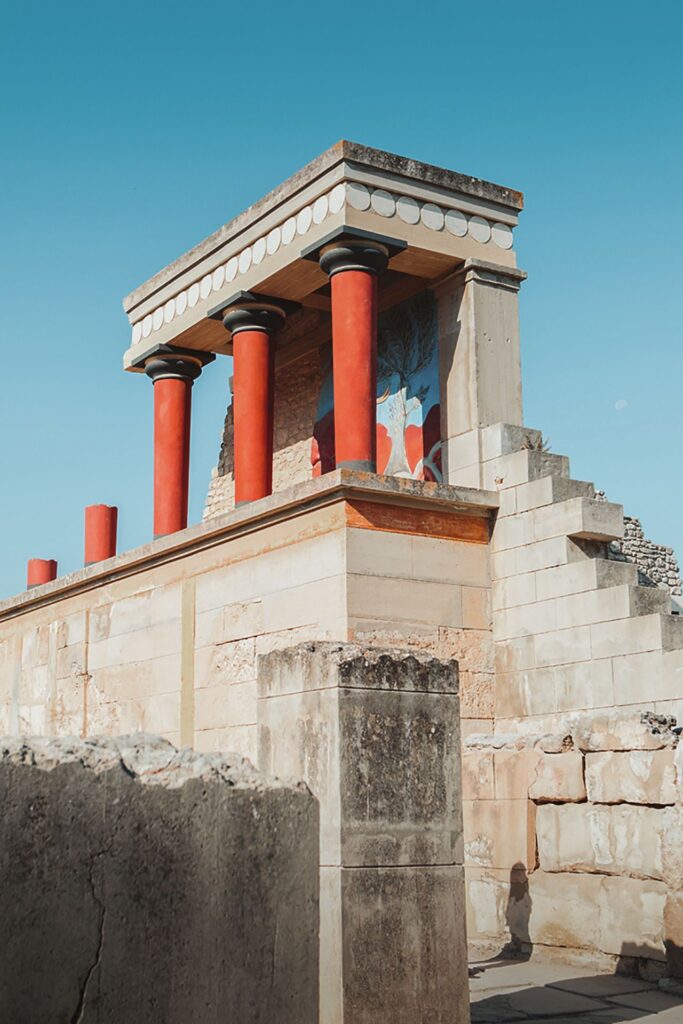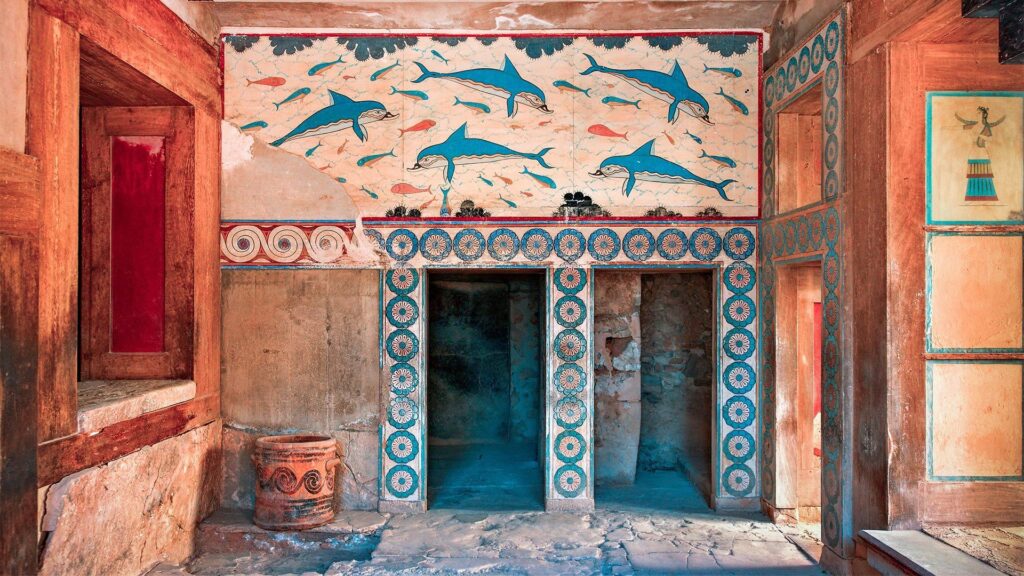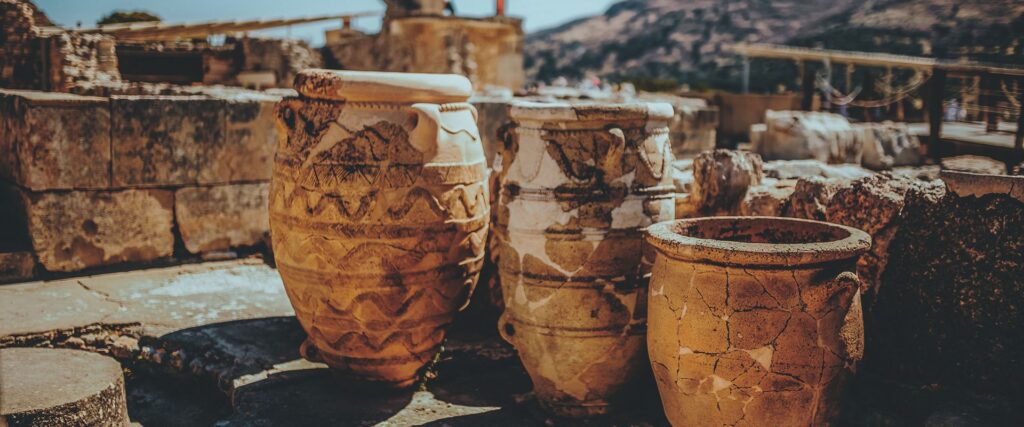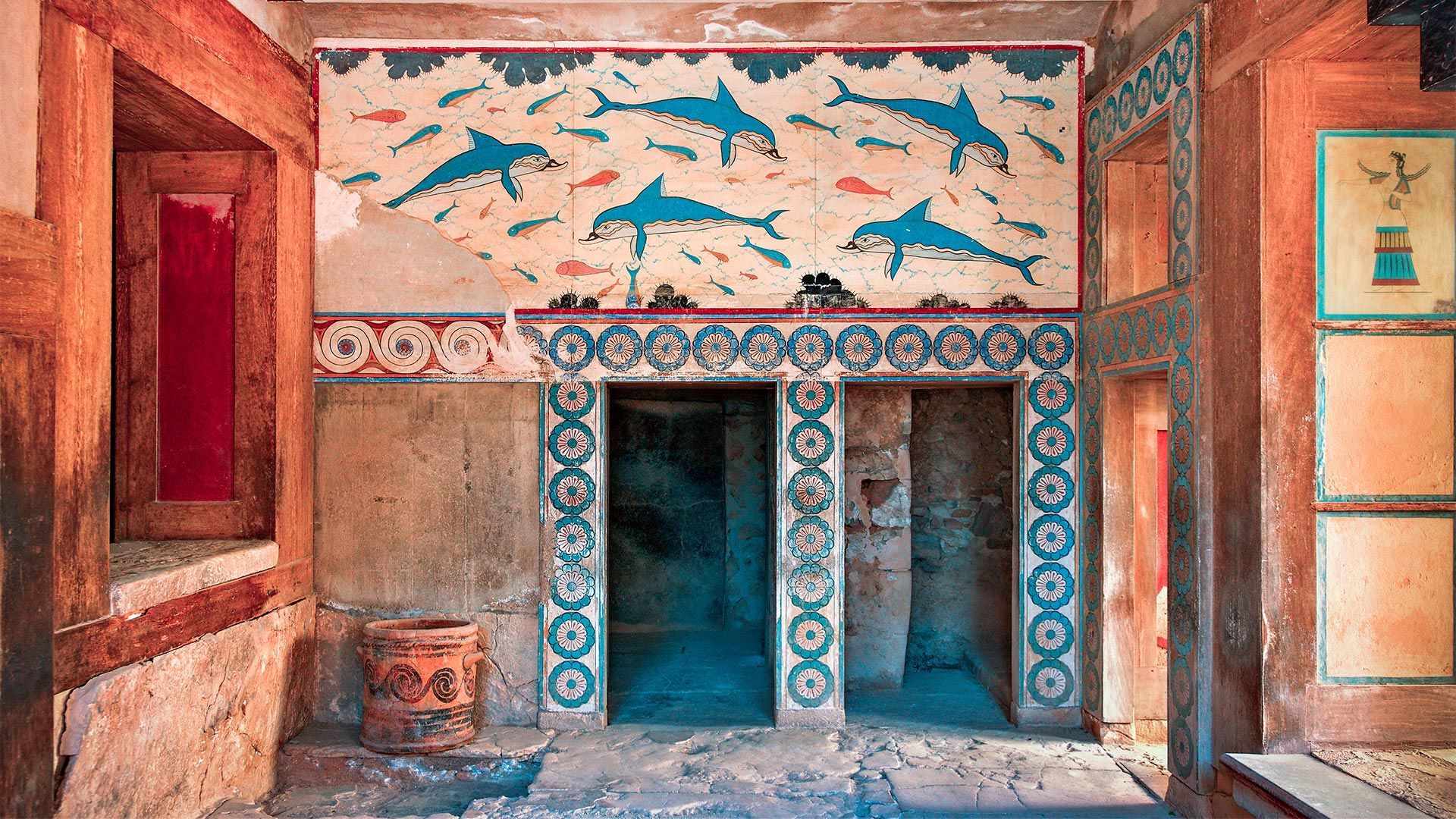Those wanting to discover one of the largest and richest archaeological sites in Europe should add Heraklion- with its ancient treasures, historical riches, and ruins of the grand city of Knossos to their list.
Knossos Palace was once a thriving spot and the capital of Minoan Crete- it is grander and more luxurious than any other palace of its time.

In fact, Knossos Palace is said to be one of the most beautiful ruins in history, making the striking palaces of Knossos and Phaistos Crete’s most famous and visited ancient sites by both local and international visitors who travel here all year round.
Once the imperial seat of the Minoan King, Minos, Knossos is the perfect destination for history buffs who want to discover more about myths like those of the Minotaur; and the artwork and intricate mosaics allow visitors to feel as though they’ve stepped into a magical world.
History of the Knossos Palace
-The Minoans slowly began settling in the area starting from the Neolithic period, approximately 7000 BC; until the Mycenaean invasion, then the area was used by the Mycenaeans until it was completely abandoned.
-Human presence on the site is evident for thousands of years, before the construction of the first palace.
-Knossos is the largest palace in Minoan Crete. It is double the size of Phaistos, Mallia, four times the size of Zakros, and seven times larger than Gournia.
What you will Discover at Knossos

Walking around the historical site, you will discover a massive civilization that was thriving 4,000 years ago. You will come across a drainage system that is so intricate and villas that were luxurious; many houses were five levels. Public and private areas were adorned with ornate frescoes, pottery, and wall paintings; Minoan artwork is so famous that it continues to inspire artists from all over the world.
As you stroll through, you will also be able to see how the Minoans used three separate water-management systems and you’ll get up close to the Minoan columns- differing from the Doric, Ionic, and Corinthian style Greek columns – these columns are narrower at the bottom and wider towards the top.
Facts about Knossos
-Knossos Palace is huge and sprawling (43,000 square metres).
-The palace had 1,300 rooms connected with corridors around the main courtyard.
-The archaeological site of Knossos was discovered in 1878 by Minos Kalokairinos, a Cretan entrepreneur who was fascinated by archaeology.
-In 1900, English archaeologist Sir Arthur Evans led excavations in Knossos, which lasted around 35 years. Evans found that the Palace of Knossos was destroyed and rebuilt at least two times; with the first palace built around 1900 BC and the second palace built after 1700 BC.
Tips

-If you’re planning a trip to Knossos, it’s a good idea to stay in Heraklion, the capital of Crete. There are many options for accommodation, eating, and a great base to explore other nearby sites.
-To fully understand the history and culture of Knossos and to explore it in detail, it’s best to join a tour with a licensed guide.
Getting there
From the centre of Heraklion, Knossos is about 5km away, which makes it very convenient to get to by car. The Line 2 bus will take you directly to Knossos, otherwise, you can take a 5-minute taxi ride to the site. Alternatively, if it’s not a hot day and you enjoy walking, it’s about an hour’s walk from the heart of Heraklion.

